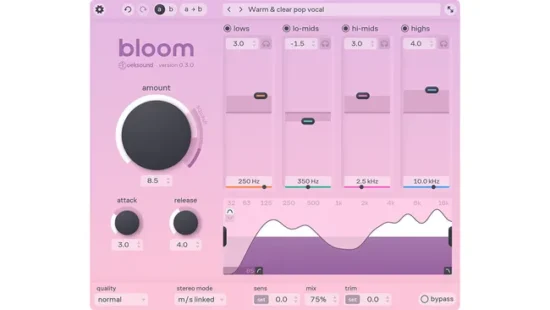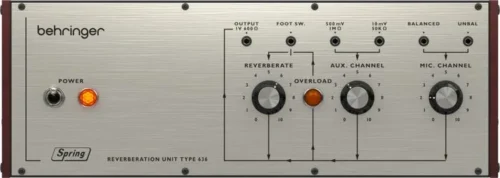Oeksound Bloom Adaptive Tone Shaper Makes Your Music Sound Better

Oeksound is one of those companies that makes plugins that make your music sound better. The company’s new Bloom processor looks to continue the trend.
Oeksound doesn’t release that many plugins, but they have all made a big impression. 2018’s Spiff was originally designed as a corrective vocal processor, but turned out to be an equally useful tool on almost any sound source. And as for Soothe2, well that is one of the great plugins of our time, one that we described as “a dynamic EQ plugin that no producer should be without”.
Big pressure for Oeksound on this latest release, Bloom. According to the company, an “adaptive tone shaper” – basically it sounds like it makes your music sound better, or, depending on how it sounds in the first place.
“It analyses the character of a signal and applies corrections to the perceived tonal balance for a more even and refined sound,” says Oeksound, brilliantly saying everything and nothing in one sentence.
Bloom does seem to do ‘stuff’ in various frequency bands, though, so we could call it, broadly, an EQ.
“Four frequency balance sliders can be used to further shape the tone to taste, enabling both fine adjustments and radical transformations. These sliders change the overall tonal balance that Bloom is working towards, rather than making absolute cuts or boosts as found in an EQ.”
Which leaves us bemused, especially after Oeksound itself concludes: “Bloom steps away from explicit problem-solving and towards colour and tone-shaping. It can be used to fix audio, but also to sculpt it creatively.”
Which ultimately means you probably need to check it out to understand it.
You can watch a NAMM Show floor demo video below via Sonic State:
Oeksound hasn’t revealed how much Bloom will be or when it will be available, just saying “soon”. Find out more info at Oeksound website.



